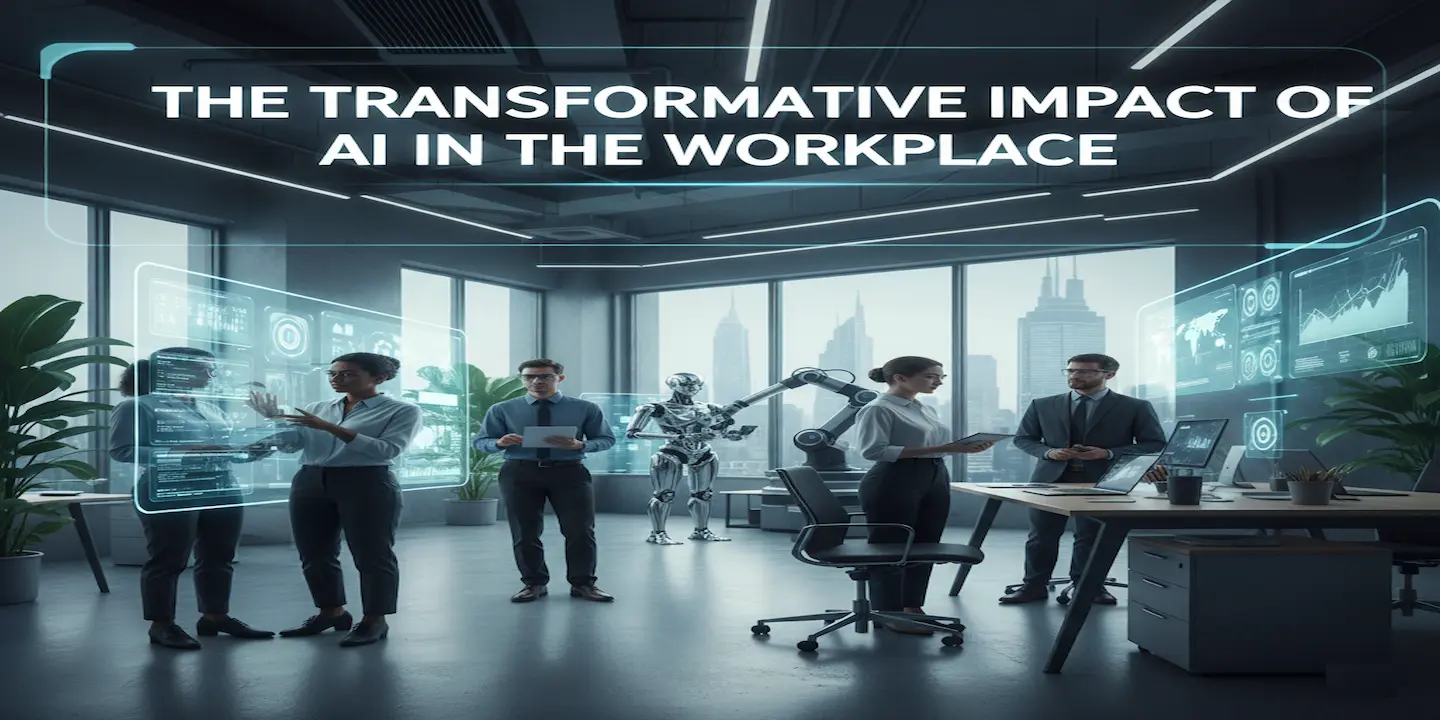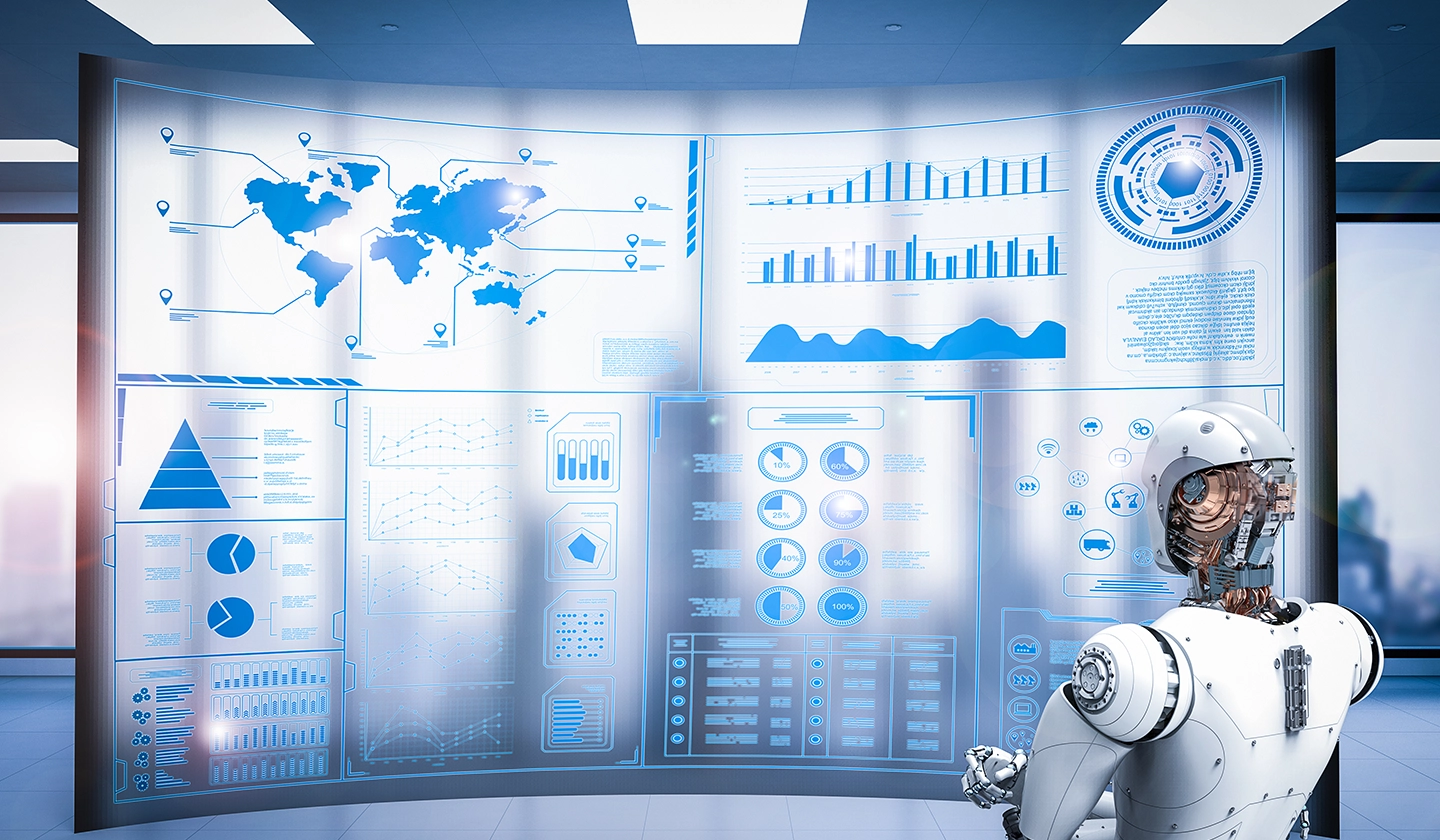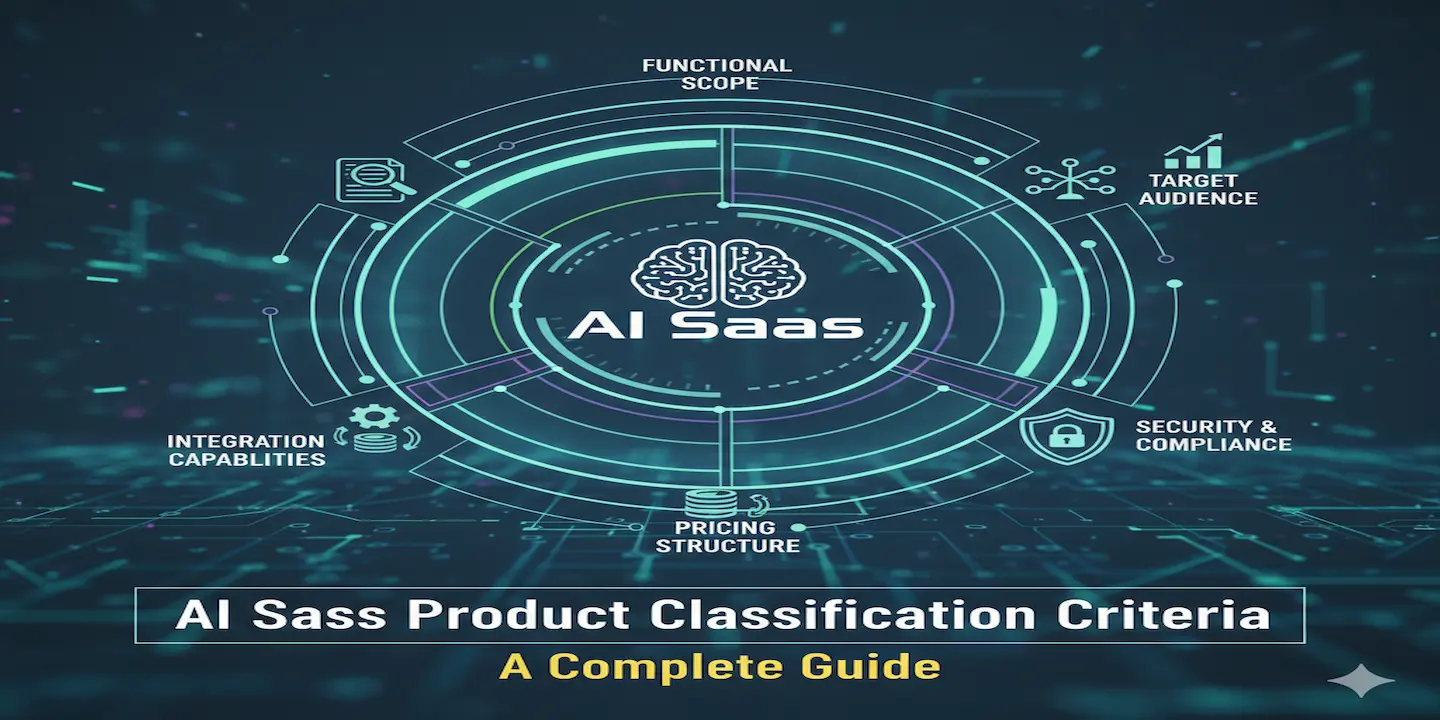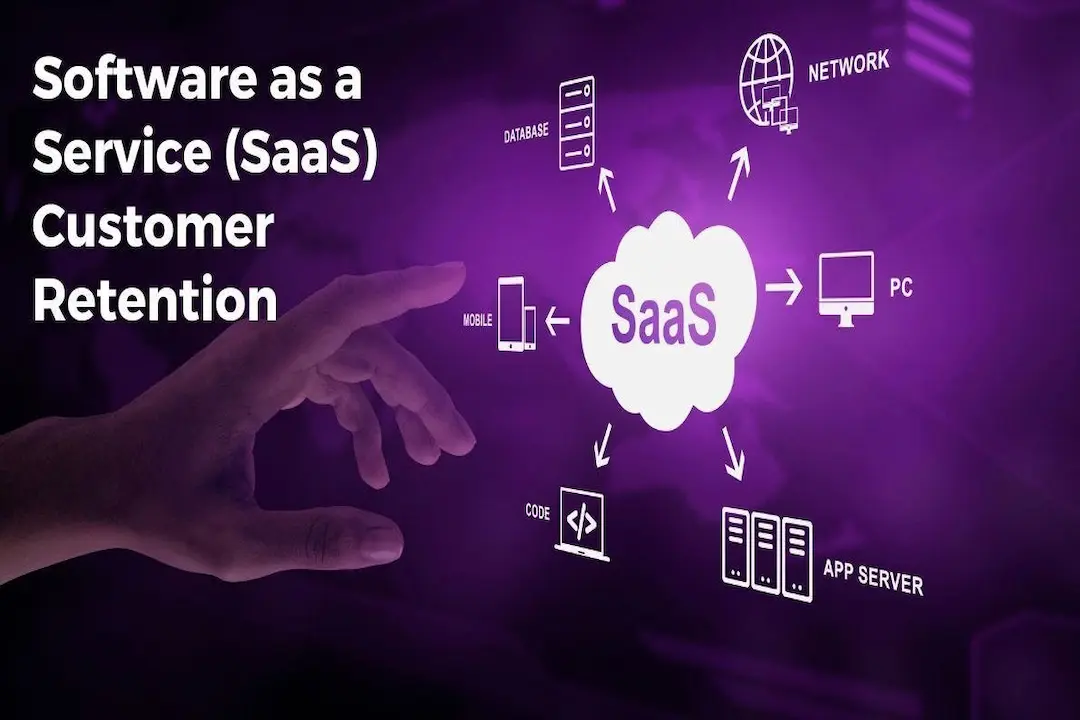
In human history, some technologies don’t just improve existing methods; they fundamentally redefine how our society and economy function. Consider the steam engine, which powered the Industrial Revolution, or the internet, ushering in the Information Age. Today, we’re on the brink of another such monumental shift: Artificial Intelligence (AI). This isn’t just another passing tech trend; it’s a profound change quickly reshaping how we work, innovate, and lead.
For small business owners navigating tough markets, marketing professionals seeking ultimate efficiency, and enterprise IT leaders designing the future, understanding AI’s diverse impact isn’t just an option—it’s essential. This article will explore AI’s deep influence on modern workplaces, looking at key areas like employee preparedness, the evolving demands on leaders, and the huge potential for productivity and creativity this tech revolution offers. We’ll see how forward-thinking organizations aren’t merely adopting AI, but strategically embedding it to achieve unprecedented growth and cultivate a more dynamic, intelligent future for their teams.
Table of Contents
- 1 The Historical Context of Technology in the Workplace
- 2 Lessons from Past Technological Advancements
- 3 The Economic Potential of AI
- 4 Understanding AI’s Impact on Productivity
- 5 Employee Readiness for AI Adoption
- 6 Survey Insights and Employee Perspectives
- 7 Addressing Employee Concerns
- 8 Leadership Challenges in AI Deployment
- 9 Underestimating Employee Readiness
- 10 Strategies for Effective AI Adoption
- 11 Enhancing Creativity and Productivity through AI
- 12 The Concept of Superagency
- 13 Balancing Automation and Human Oversight
- 14 Practical Applications of AI in The Workplace
- 15 Prioritizing Practical Applications
- 16 Training and Support Systems for Employees
- 17 Conclusion
The Historical Context of Technology in the Workplace
Human history clearly shows our ongoing drive for efficiency and innovation. Every major technological leap has subsequently triggered significant societal and economic reconfigurations. By understanding these past changes, we gain invaluable insights into the current AI revolution.
Lessons from Past Technological Advancements
Take the steam engine. Its arrival in the 18th century didn’t solely automate tasks; it centralized manufacturing, established factories, and spawned entirely new industries and urban centers. Farm laborers moved to cities, learning new skills and adjusting to machine-driven work. The initial disruption was immense, but ultimately, it propelled humanity into an era of unmatched industrial growth.
Later, in the late 20th century, the internet emerged, decentralizing data, connecting the world, and giving birth to the digital economy. It revolutionized communication, commerce, and education. Roles like data entry and customer service changed dramatically, while new positions in web development, digital marketing, and cybersecurity appeared. Society adapted by prioritizing digital literacy, flexible work models, and rapid information exchange.
Comparing these historical shifts to today’s AI landscape, we notice both similarities and significant differences. Past innovations often supported physical labor or streamlined information flow. AI, however, is unique in its capacity to enhance, and even automate, cognitive tasks—ranging from data analysis and content generation to strategic planning. While the steam engine replaced physical strength and the internet connected minds, AI is set to boost and redefine professional intelligence. The pace of AI’s progress is also unparalleled, requiring a more agile and proactive approach to adaptation than in previous eras.
The Economic Potential of AI
AI’s promise isn’t just theoretical; it’s supported by impressive economic forecasts and a growing awareness among global businesses. The capacity for AI to drive extraordinary economic growth is a central topic in discussions about its workplace effects.
Understanding AI’s Impact on Productivity
The numbers speak volumes: PwC analysts predict AI could add $15.7 trillion to the global economy by 2030, with a large part coming from increased productivity. Another projection, by Accenture, suggests AI could boost profitability by an average of 38% across industries by that same year, generating an extra $4.4 trillion in Gross Value Added (GVA). These are not small adjustments; they represent a profound economic re-calibration.
Yet, despite these massive predictions, the actual widespread implementation and mature integration of AI across businesses remain in early stages. While many companies are experimenting, only a small percentage—around 1% of companies globally—have reached what could be called advanced AI maturity, marked by broad, strategic, and impactful AI integration into core business processes. This gap reveals a significant opportunity for small business owners, marketing professionals, and IT decision makers ready to lead the way. Early adopters stand to gain a considerable competitive edge, shaping their respective industries’ future.
Table 1: Economic Potential of AI: Key Projections
Employee Readiness for AI Adoption
While AI’s economic potential is compelling, its true success depends on the workforce’s willingness and readiness to embrace it. Understanding employee viewpoints is vital for any effective AI integration strategy.
Survey Insights and Employee Perspectives
Contrary to common worries, a large part of the workforce isn’t just open to AI but is actively embracing it. Recent surveys, like one from IBM, show that a substantial 80% of employees are willing to use AI tools in their daily tasks. This widespread acceptance strongly indicates that the main obstacle to AI adoption isn’t employee resistance, but often a lack of clear strategy and support from leadership.
Industries with high data volumes and repetitive tasks are naturally seeing higher rates of AI readiness. For example:
- Customer Service: AI chatbots and virtual assistants handle routine inquiries, freeing human agents for complex issues.
- IT Operations: AI-powered monitoring and automation tools predict and prevent system failures.
- Marketing: AI tools for content optimization, audience segmentation, and ad campaign management are quickly becoming standard.
- Finance: AI is used in fraud detection, risk assessment, and algorithmic trading.
These examples highlight a growing understanding among employees that AI can be a powerful partner, boosting their abilities and freeing them from tedious tasks.
Addressing Employee Concerns
Despite this general openness, it’s crucial not to ignore valid concerns. Surveys also indicate that about 41% of employees express apprehension about AI’s impact on job security. This fear is understandable, given the common narrative around AI’s automation capabilities. For small business owners and IT leaders, dismissing these worries would be a serious mistake.
Effective AI integration requires proactive, transparent communication from leaders. This means:
- Clarifying AI’s Role: Leaders must explain that AI aims to enhance, not eliminate, human roles, emphasizing how it will boost capabilities and create new opportunities.
- Investing in Reskilling: Providing clear paths for employees to learn new skills needed to work alongside AI.
- Showcasing Success Stories: Highlighting internal examples where AI has clearly improved job satisfaction or workflow efficiency.
- Open Dialogue: Creating spaces for employees to voice concerns, ask questions, and contribute to the AI adoption strategy.
By tackling these anxieties directly, leaders can turn apprehension into excitement, fostering a collaborative environment where humans and AI thrive together.
Leadership Challenges in AI Deployment
While employees demonstrate readiness, leaders often encounter their own specific challenges in successfully deploying AI. The success of AI initiatives frequently depends on how leaders navigate these intricacies.
Underestimating Employee Readiness
A notable gap often exists between C-suite executives and the wider employee base regarding AI adoption. While executives might expect a cautious or even resistant workforce, employee surveys frequently show a greater willingness to engage with AI tools than anticipated. This perception difference can lead to:
- Delayed Adoption: Leaders might hesitate to invest in AI training or infrastructure, assuming employees aren’t ready.
- Suboptimal Strategies: AI initiatives could be rolled out without sufficient consideration for employee input or practical workflow integration.
- Missed Opportunities: The potential for grassroots innovation and employee-driven AI solutions is overlooked.
To close this gap, leaders must actively connect with their workforce, conduct internal readiness assessments, and foster a culture of open feedback. Understanding the real employee sentiment is the first step toward effective AI integration.
Strategies for Effective AI Adoption
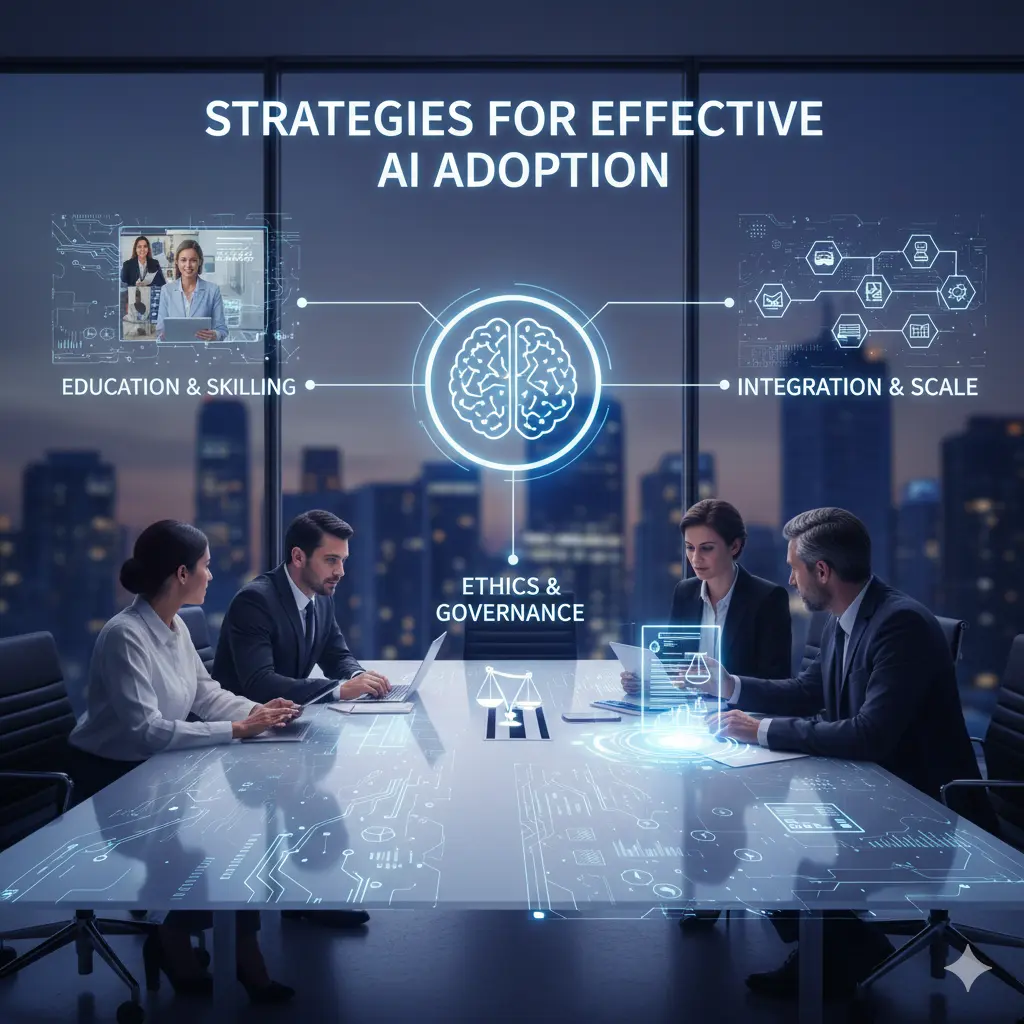
Successful AI deployment isn’t merely about bringing in new technology; it’s about guiding organizational change. Here are essential strategies for leaders:
- Define Clear Objectives: Clearly state why AI is being introduced and how it aligns with overall business goals.
- Invest in Training and Upskilling: Offer targeted training programs that equip employees with the skills to effectively use AI tools and adapt to AI-driven workflows.
- Foster a Culture of Experimentation: Encourage employees to experiment with AI, learn from failures, and share insights.
- Prioritize Ethical AI: Establish clear guidelines for ethical AI use, data privacy, and algorithmic fairness.
- Lead by Example: Leaders and managers should actively use AI tools themselves, demonstrating their value and encouraging adoption.
- Measure Impact and Iterate: Implement metrics to track AI initiatives’ effectiveness. Be ready to adjust strategies based on real-world outcomes and feedback.
By embracing these strategies, leaders can move past simply acquiring AI tools to truly embedding AI as a strategic asset that enhances every part of the organization.
Enhancing Creativity and Productivity through AI
Beyond just automation, AI offers immense potential to boost human creativity and productivity, reimagining what people can achieve at work. This isn’t about replacing human ingenuity, but expanding it.
The Concept of Superagency
The term ‘superagency‘ describes a state where individuals, powered by AI tools, can achieve results far exceeding their unassisted capabilities. It means leveraging AI as an extension of human intellect and creativity, enabling professionals to operate with unmatched efficiency and innovation. Picture a marketing expert who can analyze millions of data points, craft compelling ad copy, and optimize campaigns across many platforms in minutes—a feat that would take weeks or months without AI. This is superagency in action.
Case Study: A global design agency incorporated generative AI tools into their creative process. Previously, designers spent much time on initial concept generation and revisions. With AI, they could quickly produce dozens of variations of design elements and mock-ups. This didn’t replace their creativity; instead, it accelerated it. Designers reported a 30% faster project turnaround and improved diversity in their final results, as they had more time to refine new ideas rather than perform repetitive tasks. This allowed them to focus on high-level strategic thinking, client collaboration, and nuanced artistic direction.
Balancing Automation and Human Oversight
The key to unlocking superagency lies in a careful balance between AI automation and human oversight. AI excels at processing vast amounts of data, spotting patterns, and performing repetitive tasks swiftly and precisely. Humans, conversely, bring critical thinking, emotional intelligence, ethical judgment, and subtle contextual understanding—qualities AI cannot replicate.
Successful AI integration improves cognitive functions by delegating routine tasks, allowing humans to concentrate on more complex assignments.
- Content Creation: AI can draft initial content, but human editors refine the tone and add personal touches.
- Data Analysis: AI identifies trends, but human analysts interpret them and formulate strategic recommendations.
- Software Development: AI generates code snippets, freeing developers to design intricate architectures and innovate new features.
This cooperative relationship ensures that AI serves as an intelligence amplifier, boosting our abilities rather than lessening them. It’s about using AI to make us more human in our work, not less.
Practical Applications of AI in The Workplace
For small business owners, marketing professionals, and IT decision makers, the question often comes down to: “How can I actually use AI now?” The good news is that many accessible and effective AI applications exist across various sectors.
Prioritizing Practical Applications
Organizations should prioritize AI applications that address immediate problems, offer clear ROI, and align with their strategic goals. Here’s a list of practical AI applications easily adoptable by different sectors:
- Automated Customer Support (Chatbots& Virtual Assistants): Reduces response times, handles FAQs 24/7, frees human agents for complex issues.
- Data Analytics & Business Intelligence: Identifies trends, predicts outcomes, informs strategic decision-making.
- Content Generation & Optimization (Generative AI): Drafts marketing copy, blog posts, emails; optimizes existing content for SEO.
- Task Automation (RPA – Robotic Process Automation): Automates repetitive, rule-based tasks (e.g., data entry, invoice processing).
- Personalized Marketing & Sales: Tailors product recommendations, marketing messages, and sales outreach.
- Cybersecurity & Threat Detection: Proactively identifies and mitigates cyber threats, enhances network security.
- Predictive Maintenance (Manufacturing & IT Infrastructure): Anticipates equipment failures, minimizes downtime, optimizes resource allocation.
Table 2: AI Applications for Different Professional Roles
| Professional Role | Key AI Applications | Primary Benefit |
| Small Business Owner | AI-powered CRM, Social Media Management, Customer Service Chatbots | Streamlined operations, enhanced customer engagement, cost reduction |
| Marketing Professional | Content Generation, SEO Optimization, Predictive Analytics, Ad Tech | Improved campaign ROI, personalized customer experiences, data-driven strategy |
| Enterprise IT Decision Maker | Cybersecurity AI, AIOps, Cloud Cost Optimization, Predictive Maintenance | Enhanced security, operational efficiency, reduced infrastructure costs |
Training and Support Systems for Employees
Implementing AI without proper training is like giving someone a powerful tool without instructions. To maximize AI’s benefits and ensure smooth integration, robust training and support systems are essential.
- For Leaders: Workshops focused on strategic AI deployment, ethical considerations, change management, and building an AI-ready culture.
- For Employees (General): Foundational AI literacy courses covering what AI is, how it works, its ethical implications, and practical demonstrations of AI tools.
- For Specific Roles: Specialized training modules for marketing professionals on AI-powered analytics; for IT teams on AI in cybersecurity.
- “AI Champions” Programs: Designate and train internal experts who can serve as peer mentors and first-line support for AI tools.
- Continuous Learning Platforms: Provide access to online courses, tutorials, and updated resources as AI technology evolves.
By proactively investing in these systems, companies can empower their workforce, ease anxieties, and ensure AI becomes a catalyst for growth instead of a source of frustration.
Conclusion
The journey into an AI-powered workplace is more than just an upgrade; it’s a profound shift requiring thoughtful strategy, compassionate leadership, and an adaptable workforce. We’ve seen how AI is set to unlock trillions in economic value, yet its true potential relies on our collective readiness. From historical tech changes to current employee feelings, it’s clear that successful AI integration isn’t merely about installing algorithms, but about nurturing a collaborative relationship between human ingenuity and artificial intelligence.
Leaders must bridge the perception gap, actively involve employees, and invest in comprehensive training that cultivates a ‘superagency’ culture—where AI boosts human capabilities rather than replaces them. For small business owners, marketing strategists, and IT architects, embracing AI today means preparing the ground for unparalleled productivity, innovation, and competitive edge tomorrow.
The future of work isn’t one where humans become obsolete, but where humans, powered by AI, can achieve far more than ever before. The time to act is now: Companies must proactively invest in AI training, cultivate open communication, and strategically integrate AI solutions to successfully navigate this transformative era. Embrace the future, embrace AI, and unlock the next frontier of human productivity and creativity.
Transform your workplace with the power of AI. At Webologists, we help businesses integrate intelligent solutions that enhance productivity, streamline workflows, and unlock new growth opportunities. Whether you’re a small business or an enterprise, our experts tailor AI strategies that align with your goals and prepare your team for the future of work.
FAQs
-
1. How can small businesses start integrating AI affordably?
Small businesses can begin by using low-cost AI tools for customer support (like chatbots), social media automation, and analytics. Starting small helps teams build confidence and understand how AI fits into daily operations before scaling up.
-
2. What are the ethical concerns of AI in the workplace?
Key concerns include data privacy, algorithmic bias, and job displacement. Companies should create transparent policies, use diverse datasets, and ensure human oversight to maintain fairness and accountability.
-
3. How can AI improve employee engagement?
AI can personalize learning paths, predict burnout risks, and automate repetitive tasks, giving employees more time for creative and meaningful work. This boosts satisfaction and overall engagement.
-
4. What skills will be most valuable in an AI-powered workplace?
Skills like critical thinking, data literacy, emotional intelligence, and adaptability are becoming essential. Employees who combine technical knowledge with human-centered skills will thrive in AI-driven environments.


